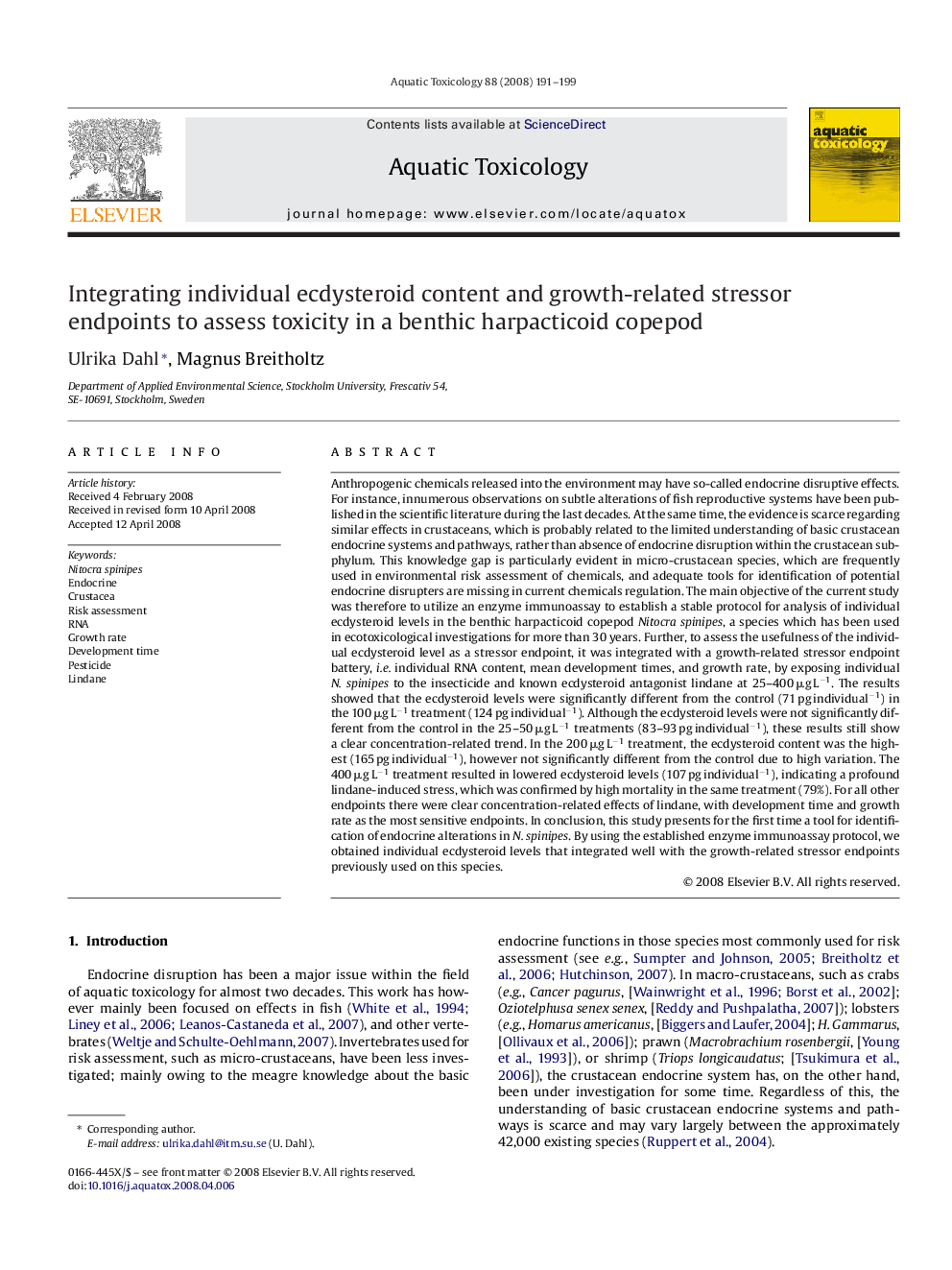| کد مقاله | کد نشریه | سال انتشار | مقاله انگلیسی | نسخه تمام متن |
|---|---|---|---|---|
| 4530797 | 1324730 | 2008 | 9 صفحه PDF | دانلود رایگان |

Anthropogenic chemicals released into the environment may have so-called endocrine disruptive effects. For instance, innumerous observations on subtle alterations of fish reproductive systems have been published in the scientific literature during the last decades. At the same time, the evidence is scarce regarding similar effects in crustaceans, which is probably related to the limited understanding of basic crustacean endocrine systems and pathways, rather than absence of endocrine disruption within the crustacean subphylum. This knowledge gap is particularly evident in micro-crustacean species, which are frequently used in environmental risk assessment of chemicals, and adequate tools for identification of potential endocrine disrupters are missing in current chemicals regulation. The main objective of the current study was therefore to utilize an enzyme immunoassay to establish a stable protocol for analysis of individual ecdysteroid levels in the benthic harpacticoid copepod Nitocra spinipes, a species which has been used in ecotoxicological investigations for more than 30 years. Further, to assess the usefulness of the individual ecdysteroid level as a stressor endpoint, it was integrated with a growth-related stressor endpoint battery, i.e. individual RNA content, mean development times, and growth rate, by exposing individual N. spinipes to the insecticide and known ecdysteroid antagonist lindane at 25–400 μg L−1. The results showed that the ecdysteroid levels were significantly different from the control (71 pg individual−1) in the 100 μg L−1 treatment (124 pg individual−1). Although the ecdysteroid levels were not significantly different from the control in the 25–50 μg L−1 treatments (83–93 pg individual−1), these results still show a clear concentration-related trend. In the 200 μg L−1 treatment, the ecdysteroid content was the highest (165 pg individual−1), however not significantly different from the control due to high variation. The 400 μg L−1 treatment resulted in lowered ecdysteroid levels (107 pg individual−1), indicating a profound lindane-induced stress, which was confirmed by high mortality in the same treatment (79%). For all other endpoints there were clear concentration-related effects of lindane, with development time and growth rate as the most sensitive endpoints. In conclusion, this study presents for the first time a tool for identification of endocrine alterations in N. spinipes. By using the established enzyme immunoassay protocol, we obtained individual ecdysteroid levels that integrated well with the growth-related stressor endpoints previously used on this species.
Journal: Aquatic Toxicology - Volume 88, Issue 3, 7 July 2008, Pages 191–199